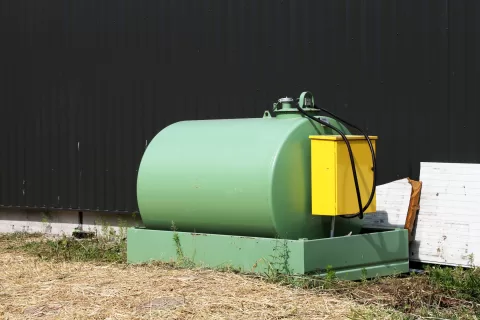Construction sites are dynamic environments where materials, machinery, and chemicals are constantly in use. With the potential for spills and leaks, these sites must implement stringent safety measures to prevent environmental contamination. One of the most critical aspects of safety and environmental responsibility on a construction site is bunding and spill management. These practices ensure that hazardous liquids, chemicals, and materials are contained and properly managed to avoid harming workers and the surrounding environment.
This article explores key practices construction sites should follow to ensure effective bunding and spill management.
The Importance of Bunding in Spill Management
Bunding involves creating barriers, known as bunds, around containers that store liquids to prevent spills from spreading beyond a confined area. These barriers are essential for sites that handle hazardous chemicals, fuels, or large amounts of water. Proper bunding ensures that any accidental leaks or spills are contained within the bunded area, preventing the spread of contaminants to other parts of the site or the surrounding environment.
Furthermore, bunding is particularly important for preventing ground and water contamination. If left unmanaged, spills can seep into the soil or water sources, leading to long-term environmental damage. Construction sites must proactively install and maintain bunds to avoid such incidents. This is where solutions like spill bunding come into play which offers tailored solutions that ensure hazardous materials are contained effectively.
Types of Bunding for Construction Sites
There are various bunding options available for construction sites, each designed to meet different needs depending on the type of liquid stored and the layout of the site. Some common types of bunding include:
Permanent Concrete Bunds
Concrete bunds are highly durable and are ideal for long-term projects or areas where large quantities of hazardous liquids are stored. These bunds are typically constructed around storage tanks or large containers. They offer strong protection but require substantial investment in terms of time and resources for installation.
Portable Bunding
Portable bunds are an excellent option for sites that need flexibility. These are typically made of materials like PVC or rubber, allowing them to be easily set up and moved around as needed. Portable bunding is ideal for temporary storage areas or construction sites with changing layouts.
Drive-Over Bunding
For sites where heavy vehicles are frequently used, drive-over bunding is a practical solution. This type of bunding is designed to allow vehicles to pass over it while providing containment for spills. The bund is often constructed of rubber or flexible materials to prevent damage from frequent vehicle traffic.
Temporary Earth Bunds
Temporary earth bunds are constructed using soil or other materials found on the construction site. While inexpensive, they require regular inspection and maintenance to ensure their effectiveness.
Best Practices for Spill Management
In addition to bunding, effective spill management on construction sites involves several key practices. These practices ensure that spills are handled quickly and efficiently, minimizing environmental impact and safety risks.
Some best practices for spill management include:
Develop a Spill Response Plan
Every construction site should have a comprehensive spill response plan. This plan outlines the procedures for containing and cleaning up spills, assigning specific roles to workers in the event of a spill. The plan should also include emergency contact information for local environmental authorities and spill response teams.
Use Spill Kits
Spill kits are essential tools for immediate spill containment and cleanup. These kits should be strategically placed around the construction site, especially where hazardous liquids are stored or used. A spill kit typically includes absorbent materials, gloves, and disposal bags to address spills before they spread quickly.
Conduct Regular Training
Workers should be trained in proper spill management techniques, including using spill kits, responding to different spills, and adhering to the site’s spill response plan. Regular training sessions can also help ensure that all personnel are equipped to handle spills safely and effectively.
Inspect and Maintain Bunds and Containment Areas
Bunds and containment systems require regular inspection to ensure they’re functioning properly. This includes checking for cracks, leaks, or other signs of wear that could compromise the bund’s effectiveness. Any issues should be addressed immediately to prevent spills from escaping the containment area.
Monitor Weather Conditions
Weather can significantly impact spill management efforts. Heavy rain, for example, can cause bunded areas to overflow, spreading contaminants beyond the construction site. Sites should have contingency plans in place for adverse weather conditions, such as installing additional containment measures or adjusting storage practices to account for potential rainwater runoff.
Factor in Environmental and Legal Considerations
Construction sites must adhere to environmental regulations related to spill management and bunding. These regulations are designed to protect local ecosystems, water sources, and the health of nearby communities. Non-compliance can result in fines, project delays, and even legal action.
In many regions, construction companies must obtain environmental permits that include specific bunding and spill management protocols. These permits often dictate the type of bunding that must be used and the procedures for handling different spills.
Invest in Technology
Advances in technology play an important role in spill management on construction sites. Innovations such as remote monitoring systems, automated spill detection, and smart bunding solutions help improve the efficiency and effectiveness of spill containment efforts.
Remote monitoring systems also allow construction managers to monitor storage tanks and bunded areas in real time, ensuring that leaks or spills are detected early. Automated spill detection systems use sensors to alert workers to the presence of hazardous materials, allowing for quicker response times.
Conclusion
Bunding and spill management are critical practices for maintaining construction site safety and environmental integrity. By implementing these practices, construction companies can protect their workers, the environment, and reputation.


